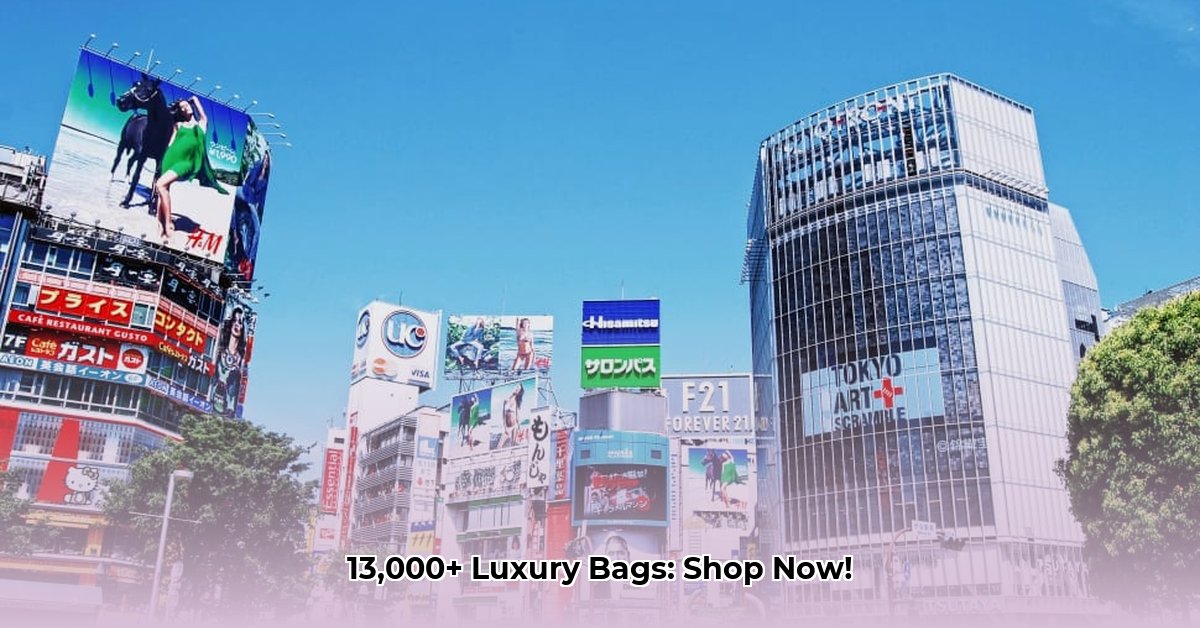
Brand Street Tokyo: A Deep Dive into Japan's Thriving Luxury Resale Market
Brand Street Tokyo (BST) boasts an impressive inventory of over 13,000 luxury handbags, establishing itself as a significant player within Japan's rapidly expanding pre-owned luxury market. However, a comprehensive understanding of its market position, pricing strategy, and growth potential requires a deeper analysis. This assessment will explore BST's strengths and weaknesses, offering actionable recommendations for sustained success.
Inventory and Market Positioning: A Competitive Landscape
BST's extensive selection of pre-owned designer handbags from prestigious brands like Louis Vuitton, Dior, and Gucci, positions it strongly within the Japanese market. Its presence on eBay broadens its reach. However, the lack of transparent pricing on its website significantly hampers competitive analysis. Without readily available price information, it's challenging to accurately gauge BST's competitiveness relative to other Japanese luxury resale platforms and brick-and-mortar stores. This opacity hinders a complete assessment of its market share and overall profitability. How can investors accurately assess ROI without clear pricing and sales data?
Pricing and Profitability: Unveiling the Financial Picture
A transparent pricing model is critical for any business, particularly within the luxury resale sector. The absence of readily available pricing information on BST’s website prevents a conclusive assessment of its profit margins and long-term financial health. Are BST's prices competitive with other Japanese luxury resellers? Are they adequately reflecting market value and yielding sufficient profit margins? This lack of transparency represents a significant obstacle to understanding the business's viability.
Marketing and Sales: Reaching the Target Customer
BST’s marketing strategy remains largely opaque. The effectiveness of its social media engagement, customer acquisition costs, and the contribution of different sales channels (website, eBay, etc.) are unknown. Without data on these key performance indicators (KPIs), it’s impossible to evaluate the efficiency of its marketing expenditure and overall sales strategy. Are their channels effectively reaching the high-net-worth individuals most likely to purchase these luxury goods? Detailed sales data is crucial to answer this.
Building Trust and Authenticity: A Cornerstone of the Luxury Market
In the luxury resale market, trust and authenticity are paramount. BST’s methods for verifying the authenticity of its handbags need to be transparently communicated. What specific authentication processes are in place to ensure genuine products? The lack of clear information regarding authenticity verification processes poses a considerable risk to the business's reputation and customer trust. How will BST reassure consumers of the legitimacy of their purchases?
Competitive Analysis: Identifying Key Rivals and Market Differentiators
A comprehensive competitive analysis is crucial to understand BST's positioning within the Japanese luxury resale market. Identifying its main competitors and differentiating factors is vital for developing effective growth strategies. Detailed market research, including consumer preferences for particular brands, price sensitivity, and preferred shopping channels, is essential for informed decision-making. Where does BST stand in relation to established players like Komehyo and BrandFirst?
Growth Strategies: A Roadmap for Expansion and Success
To thrive in the competitive landscape, BST must implement a multi-pronged approach focusing on both short-term and long-term strategies.
Short-Term Actions (Within the Next Year):
- Implement Transparent Pricing: Publicly available pricing information is essential for attracting customers and evaluating competitiveness.
- Website Enhancement: Improve website usability and visual appeal to create a superior customer experience.
- High-Quality Product Photography: Invest in professional photography to showcase the quality and desirability of each item.
- Transparency in Authenticity Verification: Clearly communicate the authentication process to enhance buyer confidence.
Long-Term Actions (3-5 Years):
- Expand Digital Marketing: Leverage social media and influencer marketing to reach a wider audience.
- Strategic Partnerships: Explore collaborations with luxury brands or complementary businesses.
- Inventory Diversification: Offer a broader range of products to cater to evolving customer demand.
- Implement CRM System: Track customer behavior and personalize the shopping experience.
- Conduct In-depth Market Research: Continuously refine strategies based on current market trends and customer preferences.
Risk Assessment: Potential Challenges and Mitigation Strategies
| Risk Factor | Likelihood | Impact | Mitigation Strategy |
|---|---|---|---|
| Counterfeit Goods | Moderate | High | Robust authentication procedures, transparent verification, partnerships with authentication experts. |
| Intense Competition | High | Moderate | Differentiation through curated selection, exceptional customer service, targeted marketing. |
| Market Fluctuations | Moderate | Moderate | Diverse inventory, flexible pricing, close market trend monitoring. |
| Low Brand Awareness | Moderate | Moderate | Comprehensive marketing and public relations campaign. |
| Technological Disruptions | Low | Moderate | Continuous technology upgrades and website optimization. |
Brand Street Tokyo possesses significant potential within Japan's lucrative luxury resale market. Addressing the identified weaknesses and implementing the proposed strategies will enable it to not only survive but thrive in this highly competitive environment. The future success of BST hinges on transparency, effective marketing, and a customer-centric approach.